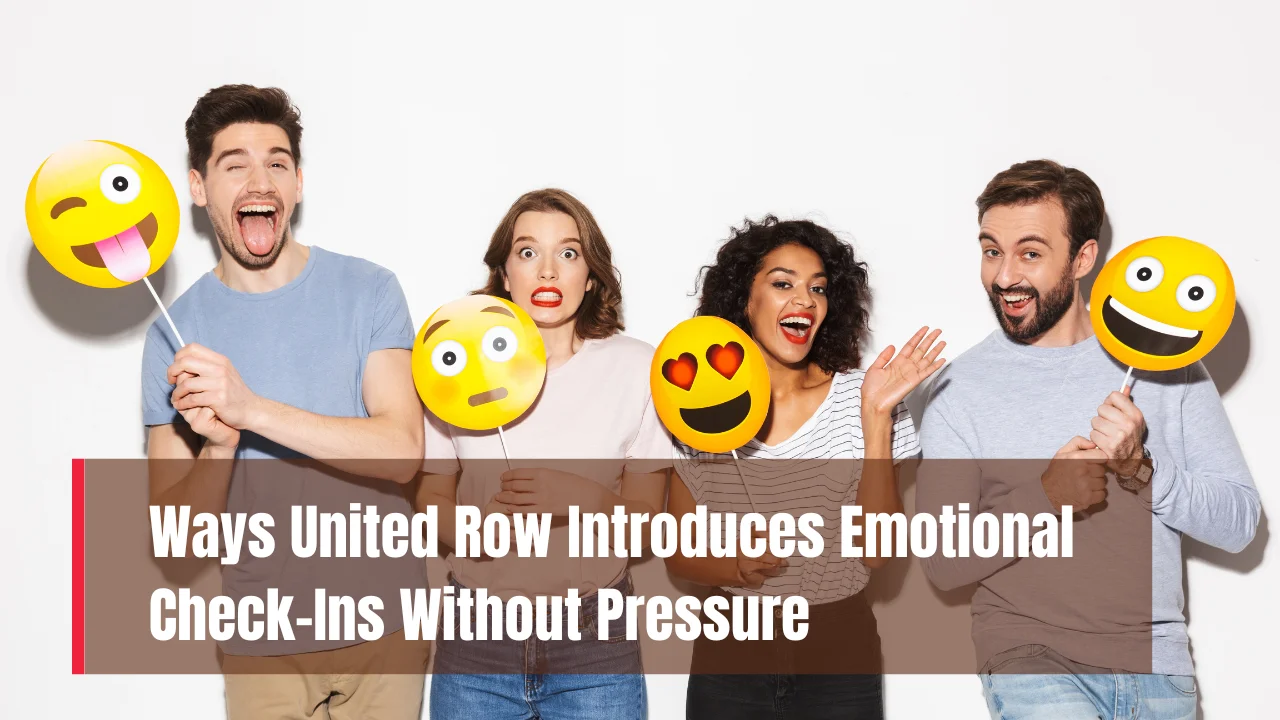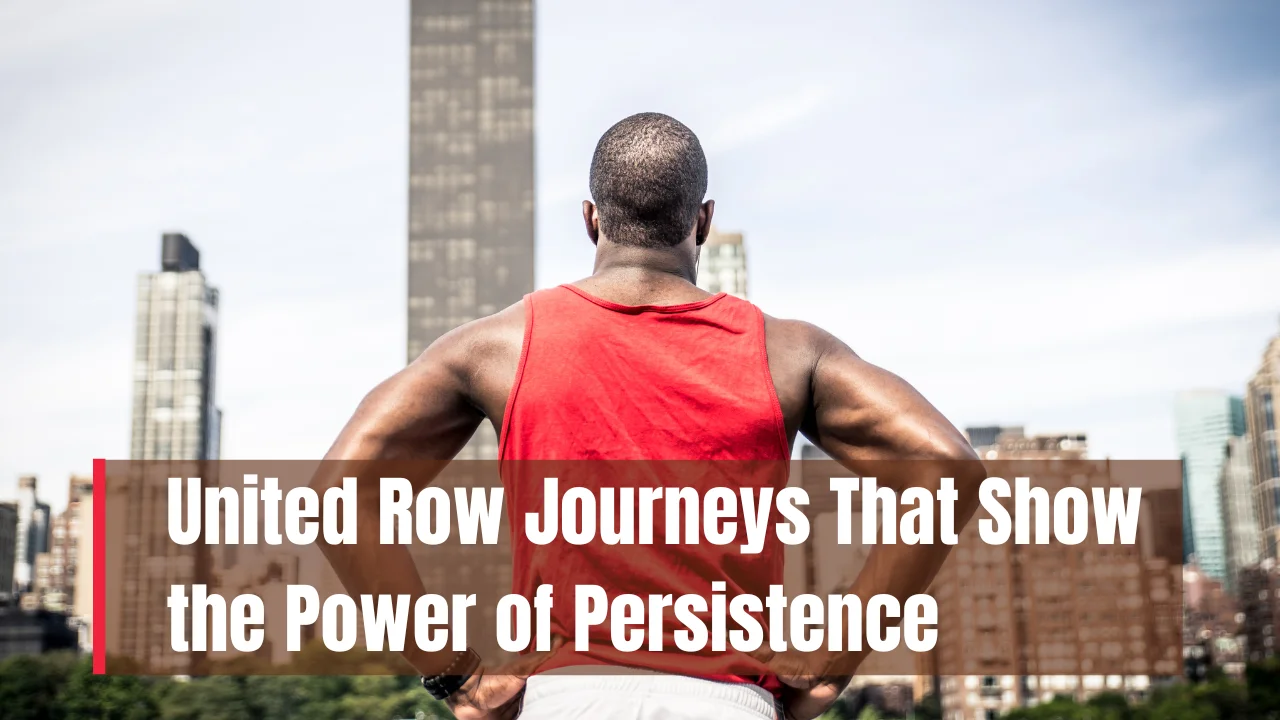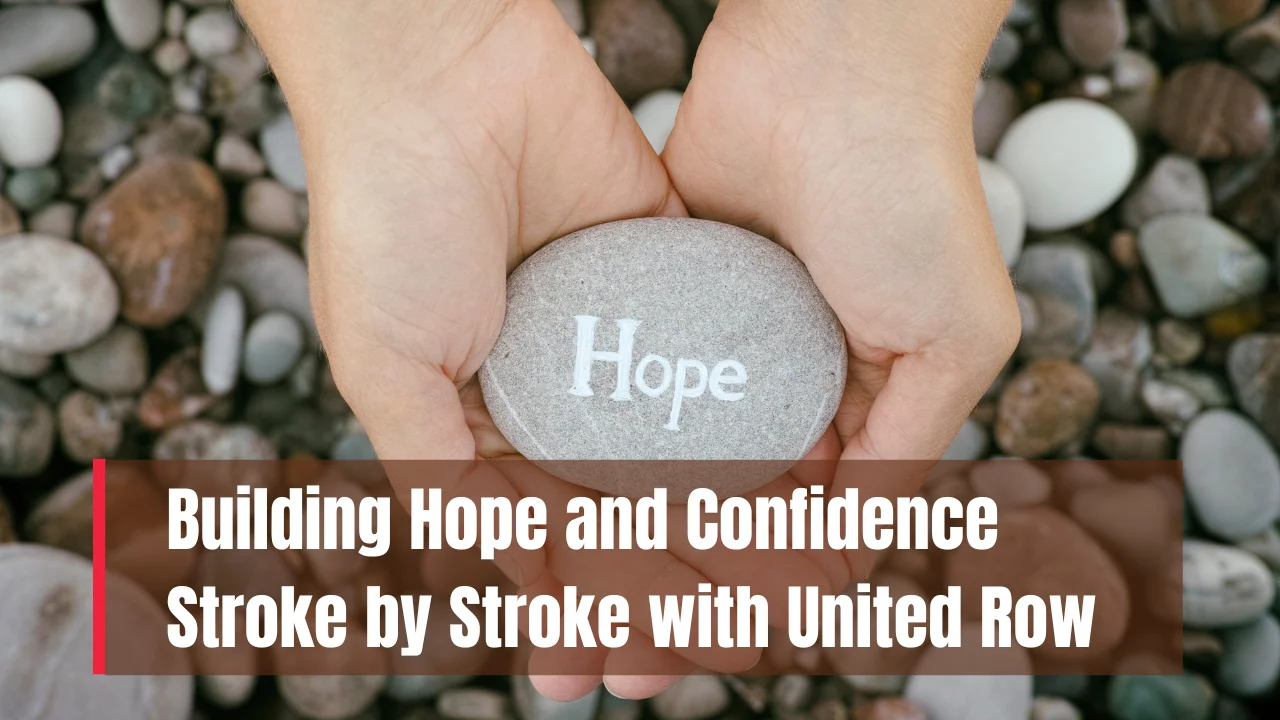Emotional Check-Ins and Their Impact on Culture: Emotional Check-Ins are transforming how teams build trust and communicate in professional and personal environments. Rather than waiting for issues to arise, many forward-thinking organizations are taking proactive steps to create spaces where emotions are acknowledged, not hidden. United Row is pioneering this gentle shift by making emotional awareness part of everyday interactions—without ever making it feel forced or uncomfortable.
This article dives into the strategies United Row uses to normalize emotional check-ins without putting pressure on individuals. You’ll gain insight into their human-first methods, the tools they use to keep check-ins light and non-intrusive, and the benefits they’ve observed in team morale and productivity. If you’re looking to improve emotional engagement in your workplace or community, these insights will give you a fresh starting point.
Emotional Check-Ins and Their Impact on Culture
At its core, emotional check-ins are short, intentional moments that help people reflect on how they’re feeling. United Row doesn’t approach this from a clinical or overly structured standpoint. Instead, they embed check-ins into the natural rhythm of team communication. This makes it easier for team members to participate authentically. Their method allows space for vulnerability without pressure, building a team culture rooted in trust, empathy, and support.
By not demanding explanations or deep emotional disclosures, United Row avoids the pitfalls of making people feel exposed. They prioritize emotional safety while encouraging people to be seen and heard. This approach is especially effective in hybrid and remote teams, where digital distance can often increase emotional disconnect.
Overview of How United Row Uses Emotional Check-Ins
| Strategy/Tool | Description |
| One-word Check-ins | Team members describe their mood with a single word at the start of meetings. |
| Mood Cards | Visual cards help employees express emotions without speaking. |
| Color Scale | A simple red-yellow-green system to indicate emotional state quickly. |
| Anonymous Input | Allows quiet team members to share feelings without speaking aloud. |
| Manager Modeling | Leaders regularly share their own emotional states to normalize openness. |
| Daily Rituals | Short emotional check-ins become part of routine communication. |
| Opt-In Format | Check-ins are encouraged but never mandatory. |
| No Fixing Rule | Team members listen without offering solutions, promoting empathy. |
Why Emotional Check-Ins Matter
In any organization, whether traditional or remote-first, emotional disconnection can quietly erode team unity. Emotional check-ins create an intentional space to reconnect, not just with tasks, but with each other. This small shift leads to big outcomes: increased engagement, reduced stress, and fewer misunderstandings.
What United Row understands deeply is that people don’t want to feel like a problem to be solved. Their approach focuses on presence and validation, rather than correction. It’s about checking in, not checking up. When people know they can share honestly without consequences, they’re more likely to be truthful—and the entire group benefits from the emotional transparency.
How United Row Makes Check-Ins Feel Safe
The safety of emotional expression is at the heart of United Row’s approach. They avoid creating a therapy-like atmosphere and instead foster openness through subtle cues and behaviors. For instance, managers might begin meetings by stating how they’re feeling—without expecting anyone else to follow suit. This passive modeling invites others in without direct prompting.
The language used in these spaces also matters. Instead of phrases like “Tell us how you’re feeling,” which may put people on the spot, they might say, “If anyone wants to share where they’re at today, feel free.” This shift from command to invitation keeps emotional check-ins casual and non-intrusive. It allows room for honesty while maintaining a strong sense of autonomy.
Simple Tools and Techniques They Use
United Row’s success with emotional check-ins comes from how natural and accessible they make the process. They’ve designed or adapted a number of lightweight tools to suit various personality types and communication styles.
- Mood Cards: With a range of illustrated emotions, team members can silently choose the card that best fits their state. This works especially well for visual thinkers and introverts.
- One-Word Check-In: Team members describe how they feel in a single word—like “focused,” “tired,” or “hopeful.” It’s fast, non-invasive, and surprisingly revealing.
- Color-Based Mood System: Green means calm or good, yellow suggests something feels off, red signals stress or overwhelm. This visual shorthand makes it easy to communicate without elaboration.
These techniques aren’t groundbreaking—but their effectiveness lies in how gently they encourage participation. No pressure, just presence.
Encouraging Regular Check-Ins
Consistency matters more than frequency. United Row doesn’t require emotional check-ins at every meeting, but they do build them into team routines. For example, Monday morning standups often include a moment to check in emotionally. Over time, this normalizes the practice and shows that feelings are a valid part of the professional space.
More importantly, leadership walks the talk. Managers don’t ask for emotional openness without first offering their own. Whether it’s mentioning a rough night of sleep or acknowledging pre-meeting nerves, these small shares signal that emotional truth is welcome—and that there’s no need to pretend everything’s perfect.
Benefits of Pressure-Free Emotional Check-Ins
By keeping emotional sharing optional and brief, United Row avoids the most common reason people dislike these practices: forced vulnerability. Instead, they create a climate of emotional permission. This has multiple benefits:
- Trust grows naturally as people begin to feel heard and understood.
- Stress and anxiety are reduced because individuals know they won’t be judged or ignored.
- Conflict is avoided or defused because early emotional signals are acknowledged.
- Productivity improves as emotional clarity leads to sharper focus and less burnout.
All of these benefits come without asking people to overshare. Just five seconds of honesty can prevent days of emotional miscommunication.
Two Key Practices by United Row
- Team Start Rituals: Every major meeting starts with a tiny check-in—nothing heavy, just a chance to see where everyone’s at emotionally. These consistent moments build emotional rhythm into work culture.
- Anonymous Feedback Tools: For those who prefer private expression, United Row offers digital forms or feedback channels where people can log how they’re feeling. This gives quieter team members a chance to be included in the emotional landscape.
Both practices reinforce the idea that everyone’s emotions matter—even if they’re not spoken aloud in the room.
Making Emotional Check-Ins Feel Normal
Normalization is the final piece of the puzzle. United Row avoids making emotional awareness a special event. Instead, they weave it into normal conversation, making emotional intelligence part of daily operations. It’s common to hear things like, “Seems like today’s been heavy, should we take five minutes?” or “I’m in a yellow zone today, just so you know.”
These cues aren’t dramatic—they’re practical. Over time, they turn emotional check-ins into second nature. And when something becomes normal, it becomes sustainable. That’s why United Row’s approach works—it’s not a program, it’s a mindset.
Final Thoughts
Emotional check-ins don’t have to be intense or uncomfortable. United Row proves that when done with care and consistency, they can become one of the simplest, most effective tools for building connection, trust, and well-being in teams. The key is making these check-ins feel human—never forced, never fake.
If you’re leading a team, managing a community, or simply trying to be more emotionally available, take a note from United Row. Start small. Keep it gentle. Let it grow. And remember: it’s not about solving feelings—it’s about acknowledging them.
FAQs
1. What is the goal of an emotional check-in?
To help individuals express their current emotional state in a supportive environment, improving team connection and understanding.
2. Do emotional check-ins need to happen every day?
Not necessarily. It’s more important that they happen regularly and feel natural rather than forced or too frequent.
3. What if someone doesn’t want to share?
That’s completely okay. United Row’s model is opt-in, and emotional check-ins should never feel mandatory.
4. Can emotional check-ins work in remote teams?
Yes, especially with tools like anonymous surveys or mood indicators in messaging apps.
5. Are emotional check-ins only useful in the workplace?
No, they can be beneficial in families, classrooms, and friendships to build stronger emotional awareness and trust.












